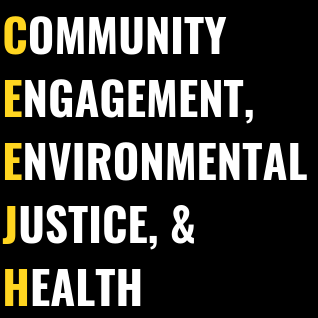CRED: Community Resistance to Environmental Disasters
The overarching goal of the proposed project is to assist communities in developing comprehensive strategies for building resilience to contaminant releases associated with natural hazards. We propose to accomplish this via the following objectives: 1. Develop a generalizable and comprehensive risk analysis framework that links natural hazards and changing environmental conditions to the release, fate, and transport of contaminants. 2. Collaborate with community partners to identify factors that may modify exposure and vulnerability of certain populations and include such factors in our framework to holistically assess health risks. 3. Assist communities in translating scientific products into realistic and relevant management and readiness plans that promote community resilience to natural hazards. This application specifically pertains to the human subjects research as it concerns Objectives 2 and 3. Crucially, knowledge generated by this project will be co-produced with longstanding partners from two specific communities at risk of natural-disaster-driven contaminant exposures. This close collaboration will enable translation of models and results into improved community readiness and resilience.
Planned outputs of this project include: a generalizable, modular tool to evaluate risks of contaminant exposures to vulnerable communities under diverse natural hazard conditions and scenarios; specific model-based analyses and field study of one urban and one rural community, with a focus on young children and the elderly; strategies for risk mitigation, such as awareness campaigns, health promotion, and emergency readiness plans, co-developed with community stakeholders. Project outcomes include: a generalizable framework for quantification of the additional risks borne by vulnerable populations including low-income families, children, and the elderly resulting from poorly understood vulnerabilities; enhanced readiness of communities to natural-disaster-driven contaminant exposures; and better quality and length of life in vulnerable urban and rural populations
